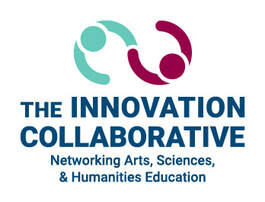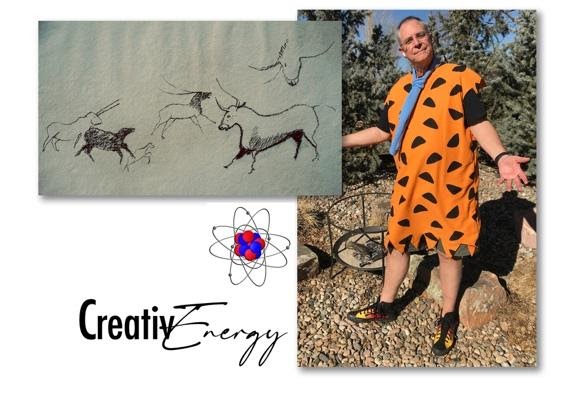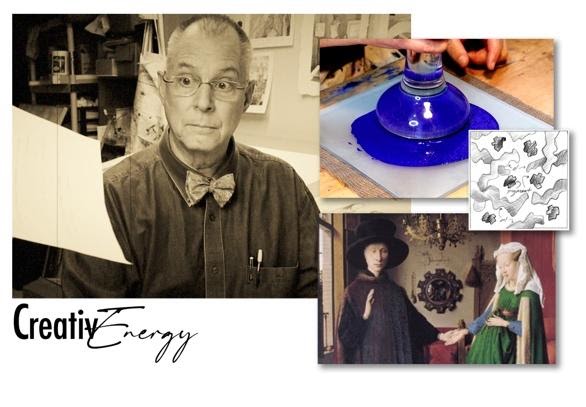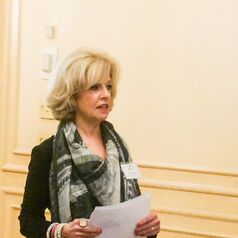 The Collaborative’s Research Thought Leaders help provide the strong research foundation for the Collaborative’s work. Each Thought Leader is nationally and internationally recognized in their own field and brings an extensive depth of experience and expertise. They also are adept at working across disciplines. In previous newsletters, we brought you interviews with each of our Thought Leaders. This new series, launched in the Winter 2021 newsletter, reflects on how you might apply some of their most important ideas in your STEAM work. To do so, we’re using examples of the Collaborative’s successful application of these ideas in K-12 classroom implementation and teacher professional development. The first article examined creative and innovative thinking. This second article examines STEAM and interdisciplinary learning. Future series articles will look at such topics as applications of these concepts to learning settings, STEAM educator training, and creating effective STEAM models. The information below is based on Thought Leaders’ interviews and an in-person convening in Washington, D.C. in 2016, that was supported in part by the National Endowment for the Arts. Interdisciplinary Learning Interdisciplinarity refers to knowledge that spans disciplines and fields. It is particularly relevant in the 21st century since many innovations occur at the intersections of various fields. Also, we live our fast-paced lives in an interdisciplinary manner, often experiencing science, art, and humanities phenomena simultaneously. Thought Leader Input
Application
0 Comments
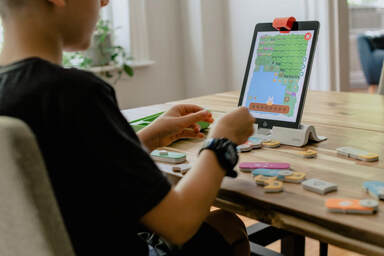 By Lucinda Presley and Tricia Shelton In this article written for Collaborative member organization, the Arts Education Partnership, authors Lucinda Presley and Tricia Shelton detail how the Collaborative and the National Science Teaching Foundation can support STEAM-based learning for remote learners in these challenging times and into the future. Since remote and hybrid learning are dominant modes of teaching for the foreseeable future, educators and students alike can benefit from STEAM learning strategies to promote engagement and learning across settings. Research suggests that STEAM (the integration of sciences, technology, engineering, the arts and math) education can help address these needs by increasing student engagement and preventing learning loss associated with remote learning. STEAM education can help develop students’ creative, social and emotional, and critical thinking skills to enable them to effectively process and navigate these unprecedented times. The transdisciplinary focus of STEAM education is also well positioned to reduce redundancy and maximize learning across the disciplines when instructional time is at a premium. The National Science Teaching Association (NSTA) and the Innovation Collaborative have developed strategies and recommendations for high-quality STEAM learning for all students, which educators can integrate into their remote learning situations. Pillars of Sensemaking NSTA recommends four “must haves”, or pillars, for this type of high-quality instruction. These four sensemaking pillars focus on the following opportunities and learning for all students:
These sensemaking pillars dovetail with successful hybrid lesson planning strategies the Innovation Collaborative found in preliminary studies that were completed with support from the National Endowment for the Arts. The following strategic steps are designed for real-world problem solving that engages and empowers students to explore important concepts:
While the future is uncertain regarding remote and hybrid learning, we are certain that STEAM education will continue to provide meaningful learning experiences for students. Enjoy seeing students thrive and grow! aep-arts.org 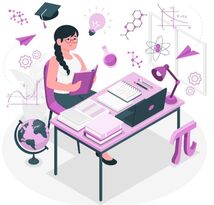 The Innovation Collaborative’s national online STEAM teacher professional development series is expanding. Launched in spring, 2020, with support from the National Endowment for the Arts, this professional development program trains teachers in STEAM effective classroom practices using the Collaborative’s K-12 research outcomes. Despite the pandemic, more than 24 administrators and arts, sciences, math, and social studies teachers from across the U.S. have already completed the course. The current spring, 2021, cohort is simultaneously training teachers, administrators, and course facilitators. These facilitators are course graduates and also Collaborative Innovation Fellows. Given their gained experience and expertise, these facilitators will be well positioned to conduct future online professional development for the Collaborative. Both teachers and administrators report a desire to continue their training. To do so, the 2020-21 cohorts have begun networking virtually to continue collaborations long-term through guidance and a networking platform provided by the Collaborative. By David Pyle, Collaborative Advisory Council member I have a confession to make: I love organic chemistry. It's true. My original education was in the arts. Music and a BFA in painting and drawing. Then I was ruthlessly seduced by chemistry, physics, and math. That combination fueled a deeply rewarding career in business and media. A career that never would have happened had I not studied music, art, AND science. Now, after 35 years that included managing consumer brand marketing, teaching, editing, writing, and executive leadership in publishing and media, I'm focusing on creating stories and resources that make those intersections between the arts and sciences - and the opportunities that arise within - clear and irresistible. For example, see the short resource videos at my CreativEnergy channel (https://tinyurl.com/5guohbwa) with titles like: ‘Mystery of the Portly Painting’ (did you know that oil paintings the world over are gaining weight at this very moment) and ‘Where'd that Color (Van)Gogh?’ (let's throw basketballs at poodle-shaped molecule models!). ‘From Caves to Charcoal to Carbon Fiber’ takes a Fred-Flintstone-Cro-Magnon guy from chewing on bear fat to inventing art-making to the molecular tetrahedrals of carbon. I’ve had such a rewarding career - in business, teaching (art + Montessori), publishing and media - not because I operated as an “art-person” or a “science-type”, but because I’ve been fortunate to live and work in the convergence of the two. I had an inkling of what this could mean when I took my first college course in organic chemistry, a topic that people often say brings them to their knees. It was a summer program in which the class met for three hours each day, jamming two full semesters into just 10 weeks. I did well in the class. Really well. And I found that I loved the subject. Why? Because organic chemistry is highly sculptural. To understand what's happening at a molecular level, you have to be able to visualize what's happening in three-dimensions. I soon concluded that I was in love with the subject (in a way that other students clearly were not!) because of the experience I had as a visual artist. I could clearly SEE what was going to happen around the bonding sites of different molecules and the mechanisms that would drive their "dance”. Over a period of years, it became abundantly clear to me that one of the most powerful and effective routes to really seeing the mechanisms of chemistry and physics - and of business and management - is through the creative skills that come with an artistic, integrative eye and ear. I've written and spoken about the "Perfect Intersection" in the arts; the fact that learning in the arts creates context and meaning around and within the other disciplines. In the hopes of making that connection tangible and real for others - and to add another voice to the many excellent programs and resources being developed across the STEAM community - I've launched the aforementioned CreativEnergy channel. Free lesson plans and other resources will be added soon. Confessions of a love for other disciplines? There are so many others who can say the same. And while confession may be good for the soul - I hope it will also be good for STEAM! About David Pyle 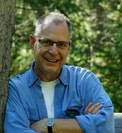 David's 35-year career in the arts and business has been fueled by his education in music, painting, and chemistry. In addition to experience as a teacher, he's managed consumer brands in the artist's products category, serving as Director of Marketing for Winsor+Newton and then Brand Director for Liquitex. In 2000, his book, What Every Artist Needs to Know About Paints and Colors, was published by Krause. Over the last 15 years, he’s served as publisher for the largest media brands in the fine art-making and crafting categories, most recently as Senior Vice President/Group Publisher with F+W Media managing The Artist’s Magazine, American Artist, Watercolor Artist, Interweave Knits, Love of Quilting and, online, ArtistsNework.com, ArtistsNetwork.TV, QuiltingDaily.com and Interweave.com and more. Through it all, he's continued to paint. In 2020, he left the corporate media world and launched a number of art-making initiatives, a new marketing services group called Pyle Creative Studio, and a series of educational resources for the art and science community. 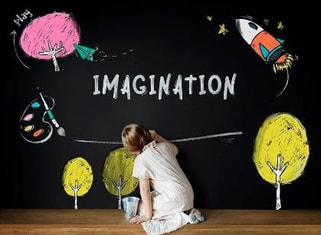 By Juliana Texley, Collaborative Board member and former NSTA President Is there a divide between science and imagination? Common conceptions of science as non-imaginative persist, but research suggests the critical role of imagination, both in the practice of STEM and in shaping learners' perceptions of themselves. Leaders at the Museum of Science, Boston, are exploring the intersections of imagination, STEM, and education practice in ways that are actionable for museum professionals. Their project will consider how research on imaginative thinking, and perspectives on the role of imagination in STEM practice and STEM education, can be systematically applied to support STEM learning in museum contexts. A grant from the Advancing Informal STEM Learning (AISL) program at the National Science Foundation (NSF) will support this project. This NSF division “seeks to advance new approaches to, and evidence-based understanding of, the design and development of STEM learning in informal environments; provide multiple pathways for broadening access to and engagement in STEM learning experiences; advance innovative research on and assessment of STEM learning in informal environments; and develop understandings of deeper learning by participants”. Research in the fields of neuroscience, psychology, child development, and education suggest ways that imagination can be fostered and improved. This evidence could be applied to the design of museum experiences to help improve STEM outcomes. The project will complete a literature review, a document review, and a survey of ISE (Informal Science Education) professionals. It will host a convening of STEM professionals (researchers, practitioners, educators, and others) and disseminate products designed to inform future project development. As a result of these activities, the leaders hope to prompt conversations about imaginative thinking, identify areas for future research, and influence future research. They hope to inspire imaginative thinking among public audiences through exhibitions, programs, and other designed experiences. The grant Principal Investigators are Rebecca Kipling and Christina Reich of the Museum of Science, Boston. You can find out more about the project at: https://nsf.gov/awardsearch/showAward?AWD_ID=1906899&HistoricalAwards=false Using Drama to Understand the Nature of Science“Using Drama to Expand Student Understandings of the Nature of Science” An article by Lydia E Carol-Ann Burke, Alison McAvella, and Anne Wessels For decades researchers have identified the affective barriers that prevent students from identifying with the roles and practices of science. However, the December, 2020, Science Teacher journal describes experiences that contributed to significant gains in student understanding of the nature of science. These pedagogical strategies allow students to express their feelings and describe experiences in ways that are not common in science education. In an introductory strategy, students sort 15 statements about the nature of science as “Agree” or “Disagree.” Then, students review their whole group’s record of agreement or disagreement and the teacher facilitates a discussion about understandings and students’ personal experiences. In Strategy 2, student pairs create ‘freeze-frame’ depictions (tableaux) to represent the relationship between Science and Student. This strategy of striking and holding a pose is similar to the recent mannequin challenge trend and could be explained and set up in the same way. In Strategy 3, students observe and discuss science-themed drama. The authors cite the Copenhagen movie as one example of a drama that allows students to consider the nature of science. In Strategy 4, students create scenes that represent extracts from a larger storyline. First, the class collectively generates a list of important contemporary scientific issues. These issues can be local or global and can be general or specific to the topic of study. After creating the list, students as a group prioritize the issues (e.g., using a dotmocracy survey or other voting strategy). The top-ranking issues are then distributed as topics for small group work. There, they develop a short scene based on the issue assigned. The goal is to work toward an “inciting incident”, an event that would propel the main character into the central problem of the story in a dramatic or life-changing way. The authors recommend that teachers be patient as students express themselves, being very attentive to the students’ comments, repeating and seeking amplifications and clarifications, until students are satisfied that they have clearly communicated their ideas. https://www.nsta.org/science-teacher/science-teacher-novemberdecember-2020/using-drama-uncover-and-expand-student Ya Gotta Have Art!ESL (English as a Second Language) students in the Engaging Newcomers in Language and Content Education (ENLACE) Academy at Lawrence (Massachusetts) High School, share the same challenges and more as native English-speaking students in these “unprecedented circumstances”. This started with an effort to get a 3-D printer for the art department. It ended up as a major effort in the Samsung Solve for Tomorrow program for ENLACE art teacher Shaddai Vargas. Samsung sponsors a national competition that challenges public school teachers and students to come up with STEM-based solutions to problems impacting their communities. The contest helped Lawrence students come up with a whole world of new possibilities that integrate art, engineering, and technology. Vargas writes: “Teaching STEM through PBL [Project Based Learning] is something that I want to continue for the positive impact it will have on the future…not just for my students but for our community and the world. Integrating technology and PBL in my art class opened a new special vibe where creativity and community are in a constant boost”. Vargas’ students’ projects involved looking for a solution to natural gas explosions, which had devastated homes in the community. As an art teacher, he felt the experience opened a “whole new world of opportunities” for his curriculum. https://www.eschoolnews.com/2021/02/10/how-an-art-teacher-tackles-stem-and-pbl/2/ REALM ProjectREopening Archives, Libraries, and Museums (REALM) is a research project conducted by OCLC (a global library cooperative), the Institute of Museum and Library Services, and Battelle (a global science and technology research institution). It will produce science-based information about how materials can be handled to mitigate COVID-19 exposure to staff and visitors of archives, libraries, and museums. Battelle has contributed data to guide the reopening process. Currently in the third stage of the project, the partnership is monitoring the protocols that have been developed. https://www.oclc.org/realm/home.html EvaluatinG Computer Workshops at the Science MuseumDafni Konstantinidi-Sofrona has reported on research about how computer workshops are interfacing with and supporting science learning in informal settings. The CoderDojo workshops at the Science Museum, London, United Kingdom, are part of the CoderDojo global movement of free, volunteer-led, community-based programming clubs for young people. CoderDojo believes that an understanding of programming languages is increasingly important in the modern world, that it’s easier to learn these skills early, and that nobody should be denied the opportunity to do so. https://www.nsta.org/connected-science-learning/connected-science-learning-march-april-2021/evaluation-computing Larry Ferlazzo offers “Ten Culturally Responsive Teaching Strategies for the Science Classroom” in Education WeekThis column summarizes the culturally responsive teaching experiences and recommendations of 4 teachers, such as:
https://www.edweek.org/teaching-learning/opinion-ten-culturally-responsive-teaching-strategies-for-the-science-classroom/2021/02 Building an Anti-racist Science ClassroomNSTA’s (National Science Teaching Assn.) Next Gen Navigator features a blog on ways to create a supportive and equitable environment in the science classroom. Some suggestions from the blog are listed below.
Read the entire blog at https://www.nsta.org/blog/building-anti-racist-science-classroom |
